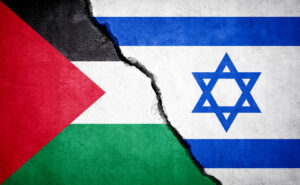The most important PR plan is the backup plan
Here’s how PR pros should consider building in contingencies when thinking through their campaigns and crisis strategies.

Formula 1 is my favorite motorsport and it’s not just because the cars go fast.
Sure, they go fast, but the races are usually won by strategy. During every race, they air the radio communications between the drivers and their crew, and you’ll inevitably hear one or both say, “We need to move to Plan B.”
“Plan B” has never been more important for public relations than it has been in the past year—or will be in the next year.
We are marking a string of painful one-year anniversaries when it comes to COVID-19 and the impact the pandemic has had on all walks of life. As we turn a hopeful eye to the future, there will be some indelible impacts. As only one example, the trend toward remote work is not going anywhere in the future – though I hope we’ll Zoom a lot less.
Similarly, for us in communications, we learned valuable lessons about how less-than-valuable plans can be if there’s no good backup plan. The past year has felt like a never-ending crisis communication plan, and there’s value in that thinking for the months ahead.
All plans should emulate crisis plans
For the majority of my career, most plans have essentially been “best-case scenario” plans where you outline everything that you want to do, whether it’s for an event or a product launch or a new initiative. When it comes to changing the plans based on outside forces, it’s usually to remove an aspect of the plan or shift dates. There typically isn’t a “what-if-all-hell-breaks-loose” aspect to these proactive plans.
In contrast, crisis communications plans are almost solely focused on that. There’s a Plan A, if everything goes well in responding to a crisis, but there’s also a backup plan, and a backup plan to that backup plan, and so on.
When the pandemic hit a year ago, I relied on my experience in crisis communications daily for months. Every day seemed to provide a new challenge for clients, ranging from directly being affected by COVID-19 (such as events being canceled or employees testing positive) to indirect impacts like the general public losing interest in our messaging.
As we emerge from the worst of the pandemic, there are still so many questions about our new abnormal that it seems silly to go back to plotting out a best-case scenario for public relations and marketing.
So, don’t.
Every plan needs a Plan B
The vast majority of Formula 1 races are won by teams with their backup strategy. Very rarely does it work out that the race plays out exactly how they envision it the night before.
As you prepare your plans for big launches in 2021, make sure that you’re ready for whatever the world may have in store for you. The goal with your Plan B (and Plan C or D if needed) is to be flexible enough to change course as necessary and as quickly as possible.
It might be something as simple as changing venues, for example you planned a live event for September of 2021, and it turns out that still doesn’t work. It might be focused on resources: You thought you had this much budget, but now you only have this much budget. Or it might be more complex: Your top-level messaging is not resonating with your audience and you need to shift gears.
There is palpable excitement right now after some good signs on the pandemic and the economic front. Regardless, it’s foolish to think we’ll suddenly and instantly return to normalcy. It’s going to take time. It’s going to take work. And it’s probably not going to go as smoothly as we think it is.






